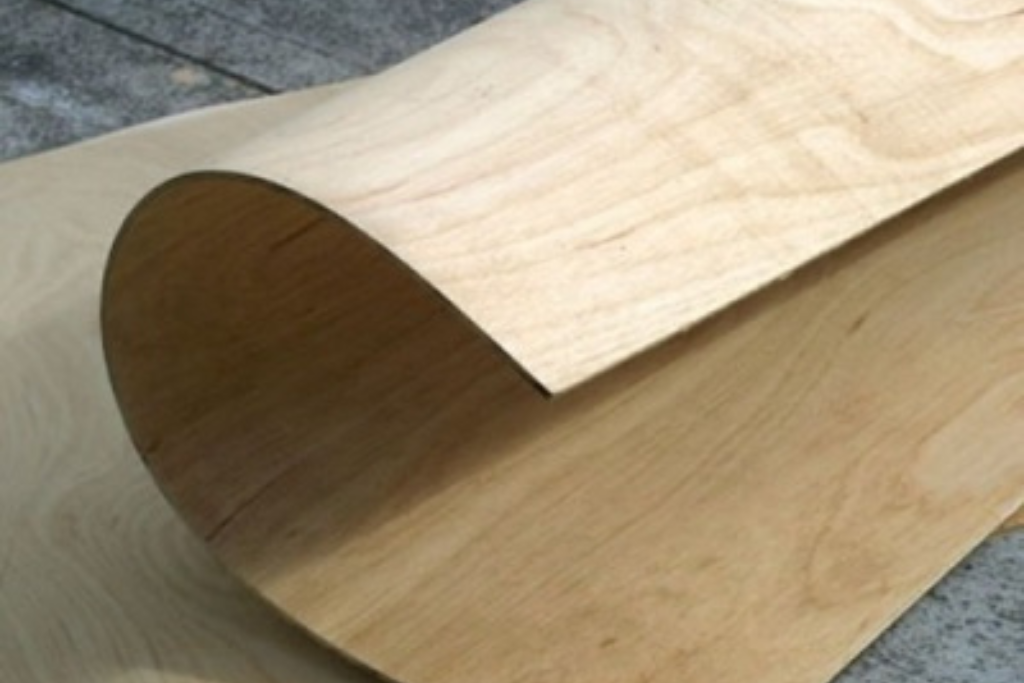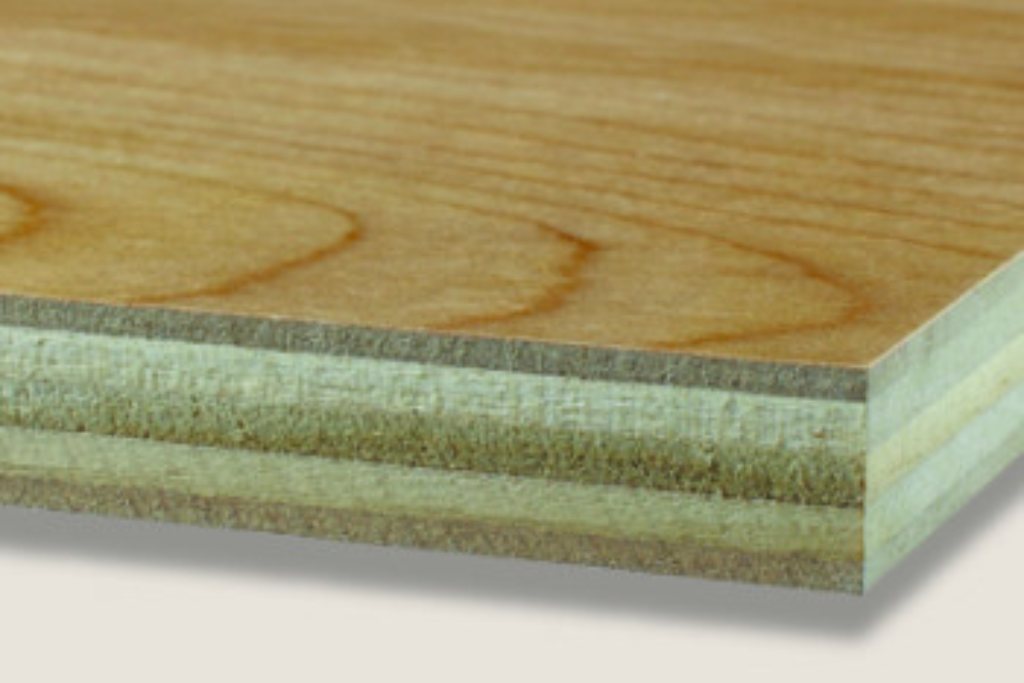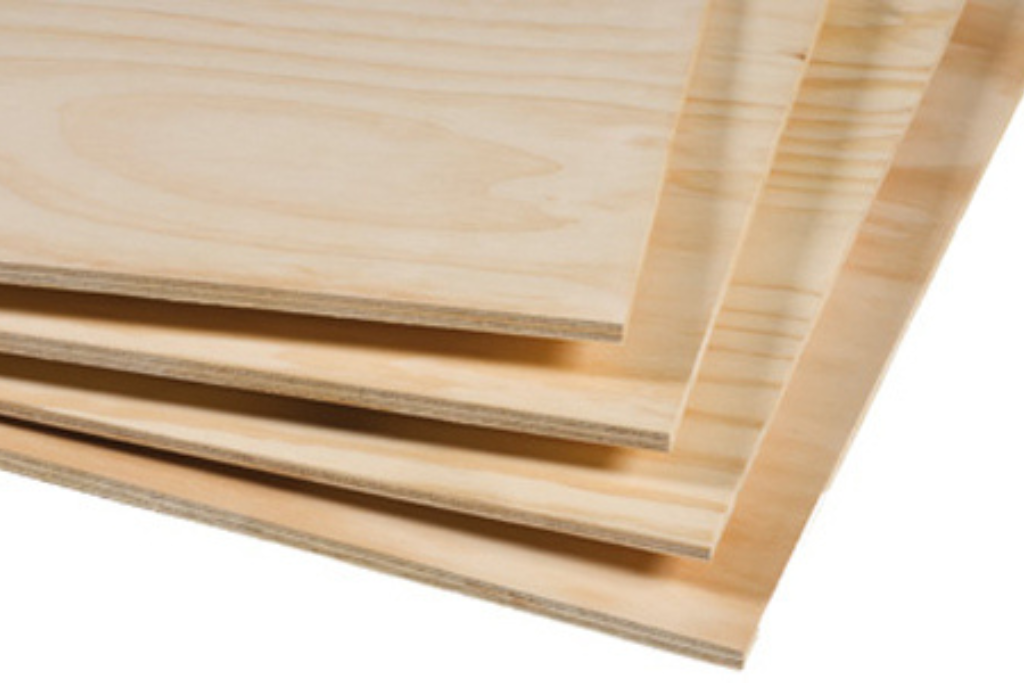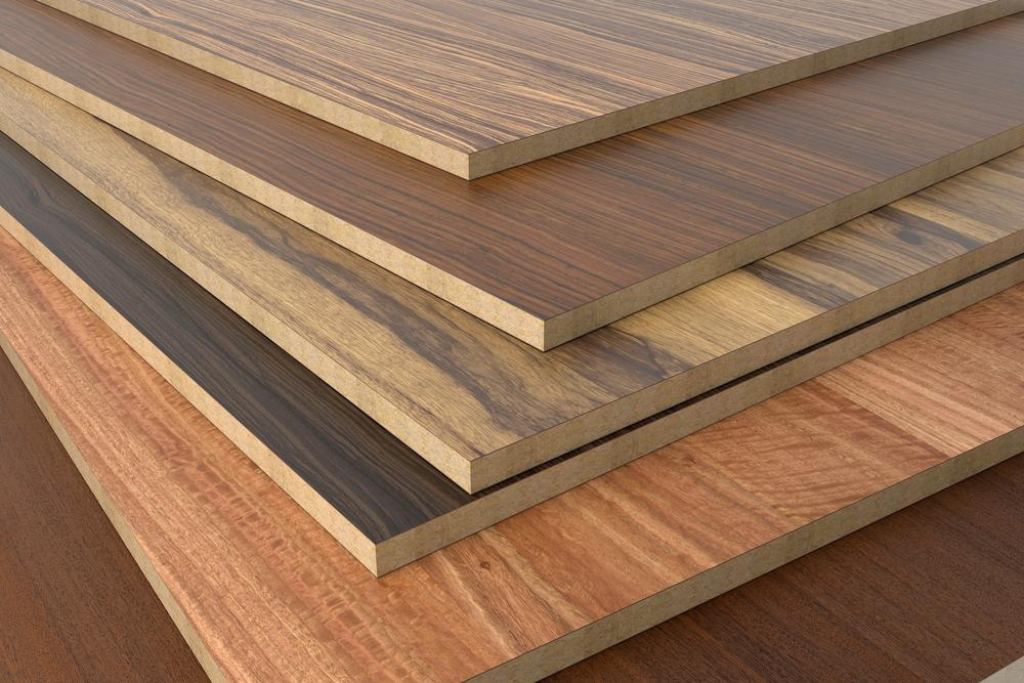Plywood is a commonly used material in a wide range of construction projects. It is often made up of three or, at times even more thin layers of wood that are glued together with an adhesive to make it a stronger and more durable version of traditional wood. In simple terms, plywood is a wooden panel made by stacking and gluing multiple thin layers of wood veneers on top of one another. The uses of high-quality plywood in Nigeria are quite many; roofing, flooring, interior walls, furniture, cabinets and so much more that we will look to explore later in this article. The use of plywood is on a steady increase as the global market grows and the need for furniture making and construction increases, because of the lack of reliable and affordable alternatives in the construction market.
Making use of high-quality plywood in Nigeria has become one of the most popular ways for construction experts and learners. A collection of all of the useful properties that it possesses, like its moisture-withstanding property, durability, and high strength despite being robust and versatile. For all of the advantages that it possesses, plywood remains the most affordable and durable option for construction workers and companies alike.
It all seems to be a great furniture and construction material with all of the descriptions that have been made, but let us look at some of the advantages and disadvantages that high-quality plywood in Nigeria possesses.
Advantages of High-Quality Plywood in Nigeria
The Advantages of having high-quality plywood in Nigeria are numerous and must be carefully considered by the intended users before being used for construction of any sorts. As with all things that have advantages, it is only ideal that we look at the disadvantages, no matter how small that plywood might possess. Here are a few:
Increased stability: High-quality plywood in Nigeria often offers increased stability. This is as a result of how they are thinly stacked upon one another to create the finished product. That is, you can say that it offers increased stability as a result of its laminated structure.
Easy Polishing or Painting: plywood in Nigeria can often be easily painted and polished. Prepare the surface by cleaning properly, sanding, and filling up any imperfections to help, apply your primer coat to make sure of adhesiveness, and then apply the paint with even strokes.
Chemical resistance: plywood typically does not corrode when exposed to different chemicals and cooling towers. This makes it in the long run a cost-effective, durable material when preservative-treated. It is also resistant to shrinking, warping, twisting, and cracking.
Versatility: in comparison with other types of woods, high-quality plywood in Nigeria has a large amount of versatility in the sense that; it can be cut into any size depending on the needs of the engineer or the company that is in need of it, thereby helping to get specific measurements of it. It can also hold screws very well. It is available in different thickness measurements, as it can be obtained from thickness ranges of 6mm up to 32mm.
More Impactful Advantages of Using High Quality Plywood in Nigeria
High Impact Resistance: Plywood, which is composed primarily of wood, can support short-term overloads up to double the design load. This is helpful in areas susceptible to earthquakes or cyclonic winds. This feature works well as concrete formwork or as flooring in construction. The laminated structure of plywood effectively decreases the tensile stress by distributing loads from impact over a larger area on the opposing face.
Stability on Surface Dimension: Plywood’s cross-laminated structure guarantees that, even in the presence of temperature and moisture fluctuations, the sheets stay comparatively stable. In the building of formwork and flooring, where moisture exposure is highly probable, this is extremely crucial. This surface dimension also helps to give it a high strength and stiffness to weight ratio which makes it ideal for use in structural construction like, webbed beams, shear wall flooring, and formwork.
Panel Shear: Because of its cross-lamination structure, plywood has a panel shear that is almost twice as high as that of solid wood. Because of this, plywood is a very useful material for bracing panels, webs of manufactured beams, and gussets for portal frames.
Environmental Sustainability: Sustainable forest management practices can yield plywood, and veneers allow for a more economical use of wood resources than solid wood does.
Disadvantages of High-Quality Plywood in Nigeria
- It is quite difficult to cut.
- It is costlier than medium density fiberboard (MDF)
- It often splinters on the edges, if not handled properly during transportation.
- Most of the commercial grade plywood needs to be covered by laminates, so as to enhance its beauty and to increase its life expectancy. It is prone to termite effect and may get damaged once it is affected.
- It is known to emit toxic VOC’s (Volatile Organic Compound) as it can irritate the human eye.
- For most normal people who are not knowledgeable in the wood trade, it might be difficult for them to decipher which wood veneer might have been used to make the plywood.
Plywood can be widely regarded as the most useful and most commonly used type of wood when considering building materials, however, the average man might have little to no information when trying to get high quality plywood in Nigeria. This can be an area where most customers who intend to use it for the purpose of construction get swindled or deceived. Understanding and considering the numerous advantages and disadvantages of plywood before procuring them for usage.
While acknowledging these disadvantages, it’s crucial to emphasize that the careful consideration of the intended application, proper handling, and adherence to recommended practices can mitigate many of these challenges. The advantages of high-quality plywood often outweigh its drawbacks, making it a preferred material for construction and woodworking projects in Nigeria.
Types of High-Quality Plywood in Nigeria
Learning the types of plywood that are abound when trying to get to use is going to help you to make the most informed decision when getting the right one. For people who aren’t too informed about the various types, it might shock you to know that there are quite a lot of plywood out there, more than you would actually guess. Here is a look into the types of plywood that we have:
1. Aircraft Plywood:

This is popularly known as one of the best kinds of plywood out there. As the name suggests aircraft plywood is commonly used for the building of aircraft, boats, rafters and lots more, furniture that is made to carry heavy loads, and buildings that require strengthened plywood. The makeup of strength, durability, flexibility and light weight allows for this.
This type of plywood material is made using hardwood boards which are perfect for resisting both moisture and heat. When manufacturers use very thin veneer layers to create aircraft plywood, they can keep the plywood light and flexible not neglecting the overall strength of the material.
2. Lumber Core Plywood:

This type of plywood is usually a specifically designed 3-ply. Usually, it is made by laying down a thick wood core and gluing two thin wood veneers on each of its sides. That is, the edge-glued lumber in the center and then a layer of crossband veneer. The inner layers of a lumber core plywood is usually made of strips of various types of softwood glued together to form a study wood slab, and the outer surface of lumber core plywood is made of hardwood like oak, maple and birch.
By having a softer interior, this gives it more value for materials that needs to be screwed or nailed, as it is easier for you to attach them to the soft interior. This should be done by a professional though, as if done wrongly, the screws and the nails might not be held.
Due to its screw-holding ability, and bending strength, it becomes the perfect choice when constructing long or wide shelves in closet doors or in cabinets. Lumber core plywood is usually found in the construction of import panels, usually only 18mm thickness panels.
3. Flexible Plywood:

When observing high-quality plywood in Nigeria, a lot of flexible plywood is made use of. As the name suggests flexible plywood gets its name from it’s flexibility properties. It is made out of a cross-grained central ply and thicker cross-grained plys on both sides. And to get a surface that is shiny, wood veneers are put at the front surface.
Also known as flexi ply, it can be bent into curved shapes easily due to the flexible properties that it possesses. Knowing that there isn’t any rolling or bending resistance, it can be curved or twisted into shapes without losing its stability or strength. This is unlike the regular plywood that doesn’t possess this quality. Flexible plywood does not Chip or crack or peel when it is twisted, bent or curved.
Flexi ply is fungus resistant. This helps in making it impervious to damages caused by insects and fungal growth that happens over periods of time. It is also waterproof, making it quite resistant to moisture, which is quite important for projects that are done in moist environments or damp ones. Flexible plywood is emerging as the leading plywood as ecological and innovative practices happen in the construction sector. Its ability to reduce material waste and contribute to visually beautiful designs make it a necessary material in the evolution of architecture as well as the construction field
4. Veneer Core plywood:

When considering high-quality plywood in Nigeria for your project, depending on which, you can look into veneer core plywood. This is usually very noticeable for the number of veneers that are present in its center. It is usually constructed with a center veneer and on its sides are also glued cross-grained veneers. The ability for the veneer core plywood to bear weight is top notch along with its bending strength and the unique softness that allows nail and screw holding and the flexibility to be bent in curves
The veneer core plywood is commonly used for applications in decorative furniture that the panel edge is revealed. Applications of the veneer core plywood include but isn’t limited to children’s furniture, fixture components, drawer sides and a host of other exposed core profile applications. One has to be careful when procuring this type of plywood though, as many of the multi-layered panels available for purchase in today’s world have added urea formaldehyde.
While they might be easy to transport, can be polished from time to time, have a natural feel, not susceptible to cracking, and are eco-friendly options, it is important to note that for veneer core plywood, decorative ones are fragile and can easily be scratched or dented, this means that one must carefully consider their intended place of use. They are also very reactionary to humidity and water. This casual corroding can lead to the polish becoming weak or might even destroy the veneer core plywood. So when using a veneer core plywood, meticulous research should be done for the correct location that it is to be used and the right application method.
5. Exterior Sheathing Plywood:

The exterior sheathing plywood is a panel that can be made of several different materials. Its application is usually on the outer walls or the exterior walls of a home or building as the case may be. It is made of a strong, rigid material such as wood or gypsum. It ties the wall together when it spans it, making them stronger than they are on their own. They also offer several purposes, like helping to provide support in building and can also be used to insulate a building or home. It is joined by waterproof adhesive and is partially exposed to prevent wearing and tearing. It has compressed wood flakes that are similar to particle boards.
There are quite a few types of exterior sheathing plywood. Some such as CDX and OSB.
OSB is the most common, as it is re-engineered plywood with twice the strength. Exterior sheathing plywood provides a solid nailing platform for siding materials, allowing for attachment of siding to something else, and providing stability to the finished siding. When using exterior sheathing plywood, walls are less likely to bend and twist when subjected to forces such as wind or house settlement.
6. Marine Plywood:
when considering marine plywood or marine-grade plywood as it is popularly called, keep in mind that this is essentially the best quality type of plywood you can get. It gets its name from the fact that it is capable of withstanding the firmaments; rain, dust, sun and moisture. Although this is not the only criteria that you need to have for it to be considered marine grade.
Marine-grade plywood must have had five or more layers. These layers have far less air pockets and smaller voids than regular plywood. Knot holes aren’t allowed although it might have some in the exterior plies. It must be bonded with waterproof glue. This is not water-resistant plywood albeit the label. As the most common yet highest-grade plywood, it’s important to understand that the term reflects the grade of the plywood, which is marine-grade and utilizes waterproof adhesives. As a plywood type, it is distinguishable with the absence of knotholes.
This one is often made of firwood or larch, making it durable and sturdy. However, it is manufactured raw, without chemicals. As such, it is not resistant to rot, mildew, and molds. It is used mainly for exterior structures such as plant boxes, benches, decks, and gazebos.
7. Softwood Plywood:

Well, as it says in the name, softwood plywood are usually made from softwoods like cedar, pinewoods or redwoods. Although these woods are often merged together with hardwoods, you will be shocked to know that softwood plywood is used for heavy duty wood projects. They can be used as subfloors in homes, frame sheathings for home exteriors, and roof sheathing. It is used mainly in the construction industry for structural purposes. Other uses of softwood plywood would be in constructing tool sheds at home, shelves, and dog houses.
Softwood plywood comes in many grades, sizes, and thicknesses depending on their intended use. However, the highest grades also serve purposes such as decorating furniture, cabinet making, packaging, ventilation panel, and furniture construction.
8. Hardwood Plywood:

In contrast with softwood plywood, hardwood plywood is made of wood veneer from birch woods, oak, maple, walnut. Usually, hardwood plywood is made of seven and more layers that makes it quite strong. To actually create this type of plywood, you would need gluing the veneers at just the right depth and angle to support heavy woodwork projects. For projects that would need a durable frame, projects like wood casing, instruments, and sports equipment, hardwood plywood does the job very well.
Hardwood plywood is stronger and more durable than softwood plywood and even has a better executed appearance. This makes it the better choice for interior furniture and kitchen cabinets. The wood from which hardwood plywood is made is usually from slow growing trees which means wood is denser and therefore more resistant and solid.
Understanding Plywood Grades: A Comprehensive Guide
Plywood, a versatile building material, comes in various grades, each denoting specific characteristics that influence its appearance and performance. The grading system typically ranges from A to D, with additional combinations like BC. Let’s delve into the nuances of each plywood grade to help you make informed choices for your projects.
1. A-Grade Plywood: The Epitome of Perfection
- Description: A-grade plywood represents the pinnacle of quality. It boasts a smooth, sanded finish without any knots or defects. This grade is synonymous with perfection and precision.
- Best Use: A-grade plywood is the preferred choice for projects where aesthetics and flawless surfaces are paramount. It is especially well-suited for high-end furniture and cabinetry, providing an elegant and refined appearance.
2. B-Grade Plywood: A Balance Between Quality and Cost
- Description: B-grade plywood features a smooth, sanded surface similar to A-grade, though it may exhibit minor imperfections, typically up to about an inch in length. These imperfections add character without compromising structural integrity.
- Best Use: Suitable for projects where a high-quality finish is desired but minor defects are acceptable. B-grade plywood strikes a balance between cost and appearance, making it a versatile choice for various applications.
3. C-Grade Plywood: Practical and Functional
- Description: C-grade plywood is an unsanded option with visible knots, slight discoloration, and several minor defects. While it may require repairs or coverage, it offers practicality and functionality.
- Best Use: Ideal for projects where aesthetics take a backseat to functionality. C-grade plywood is suitable for construction purposes where visible imperfections are acceptable, such as in sheathing or subflooring.
4. D-Grade Plywood: Affordability with Utilitarian Appeal
- Description: The least finished option is D-grade plywood, characterized by an unsanded surface with several defects, widespread discoloration, and larger knot holes. It is the most affordable grade.
- Best Use: Reserved for unseen locations or structural components where appearance is not a priority. D-grade plywood finds its place in subflooring and other applications where cost-effectiveness and utilitarian function are paramount.
Combination Grades (e.g., BC):
- Description: Combination grades, such as BC, signify a mix of two plywood types. In this example, one side is graded B, and the other side is graded C. This provides versatility in balancing cost and quality.
- Best Use: BC-grade plywood is suitable for projects where one side requires a higher finish quality (B-grade) while the other side can tolerate more imperfections (C-grade). This versatility makes it a popular choice for various applications.
Understanding plywood grades empowers you to make informed decisions based on your project’s requirements, balancing factors like cost, aesthetics, and functionality. Whether you prioritize a flawless finish or opt for affordability in unseen areas, choosing the right grade ensures the success of your woodworking or construction endeavor.
Conclusion
In conclusion, the diverse applications of high-quality plywood in Nigeria make it an indispensable material in the realm of construction and woodworking. Plywood, composed of multiple thin layers glued together, brings forth a multitude of advantages and, like any other material, presents certain disadvantages to consider.
Advantages:
Firstly, high-quality plywood offers increased stability due to its laminated structure, ensuring durability and strength. Its easy polishing and painting characteristics make it a versatile choice for various aesthetic requirements. Moreover, the chemical resistance of plywood renders it durable against corrosion and decay, providing cost-effective and long-lasting solutions. The material’s versatility, high impact resistance, dimensional stability, and eco-friendly attributes further solidify its status as a preferred choice in construction projects.
Disadvantages:
On the flip side, challenges such as difficulty in cutting, higher costs compared to alternatives like medium-density fiberboard (MDF), and the potential for splintering during transportation warrant careful consideration. Additionally, the need for laminates to enhance beauty and life expectancy, vulnerability to termite damage, and the emission of volatile organic compounds (VOCs) pose challenges for users.
Despite these drawbacks, the advantages of high-quality plywood, especially in terms of stability, resistance, and versatility, outweigh the disadvantages for many construction experts and learners.
Types of Plywood:
Understanding the various types of plywood available in Nigeria further empowers decision-making. Aircraft plywood, lumber core plywood, flexible plywood, veneer core plywood, exterior sheathing plywood, marine plywood, softwood plywood, and hardwood plywood each cater to specific needs and applications. Every project has a plywood type suited to it, whether it’s the flexibility of flexi ply, the strength of marine plywood, or the aesthetic appeal of hardwood plywood.
In conclusion, the key lies in informed decision-making. For consumers and professionals alike, knowledge about the advantages, disadvantages, and types of plywood is crucial. Ensuring this awareness contributes to the success and longevity of construction and woodworking projects in Nigeria by choosing the right plywood for the right purpose. So, the next time you embark on a construction endeavor, remember the plywood choices available and make your decision wisely.
